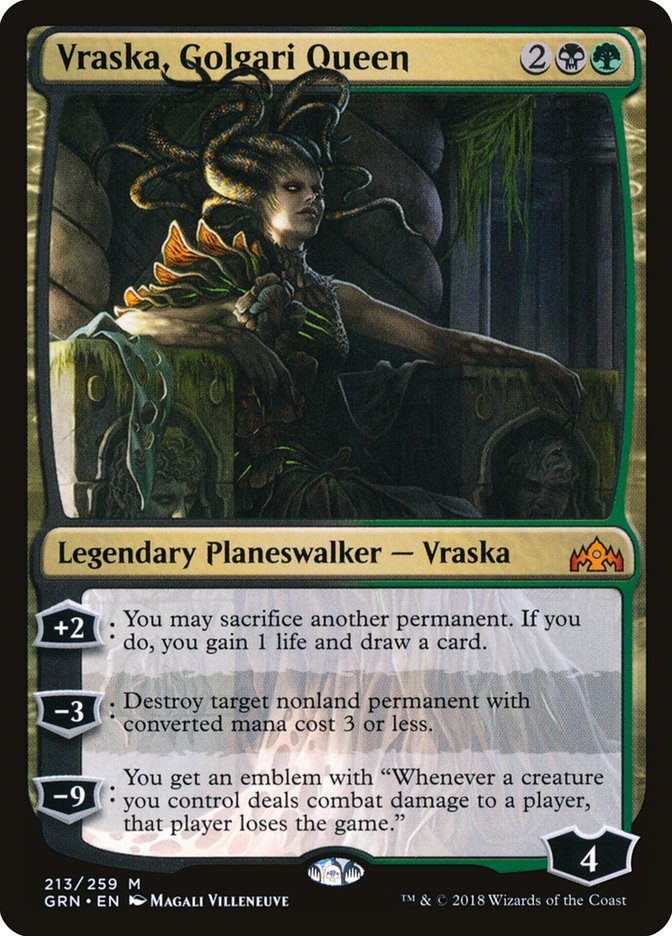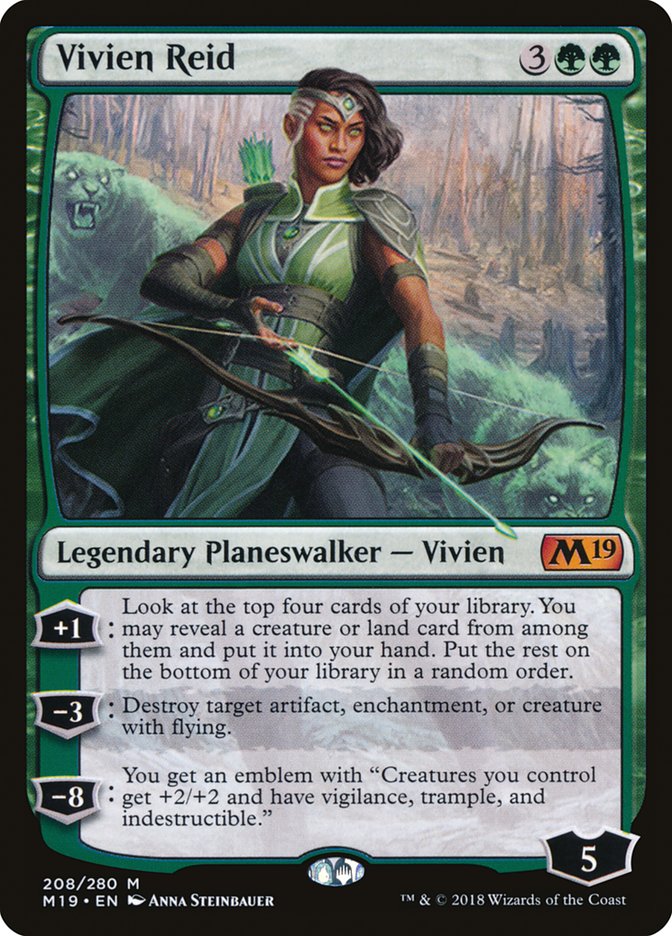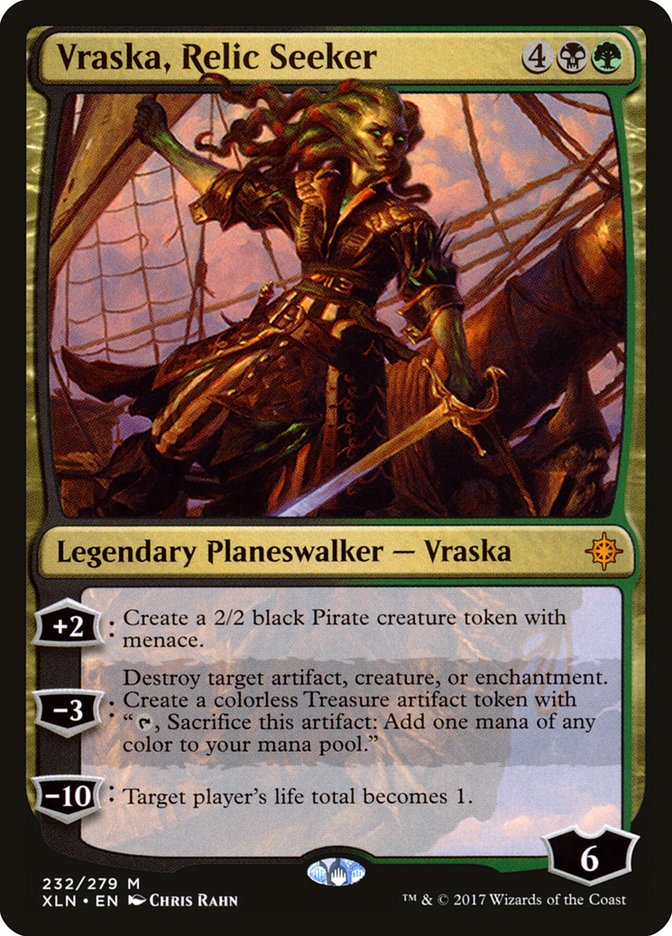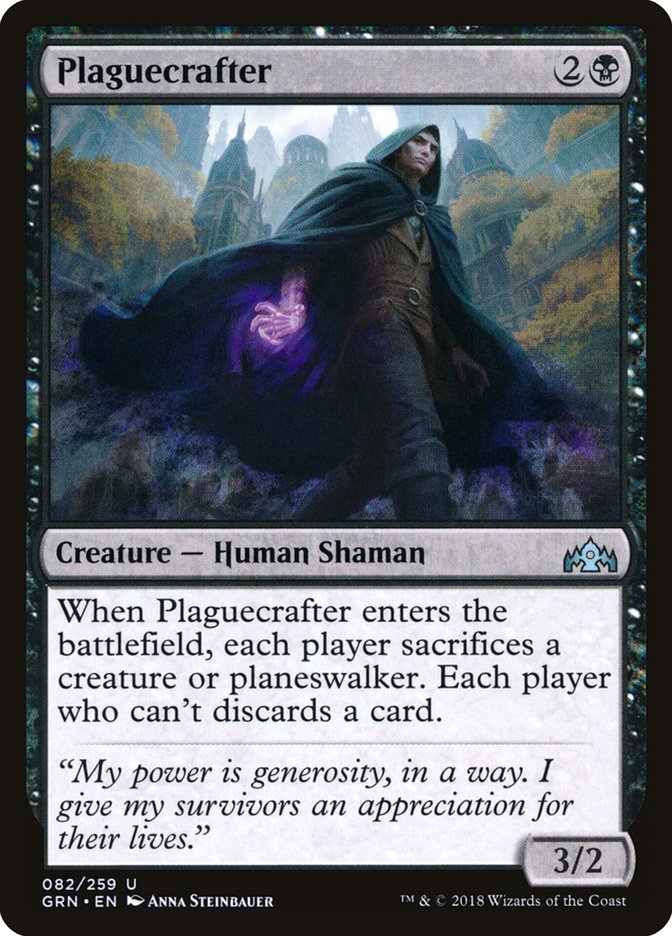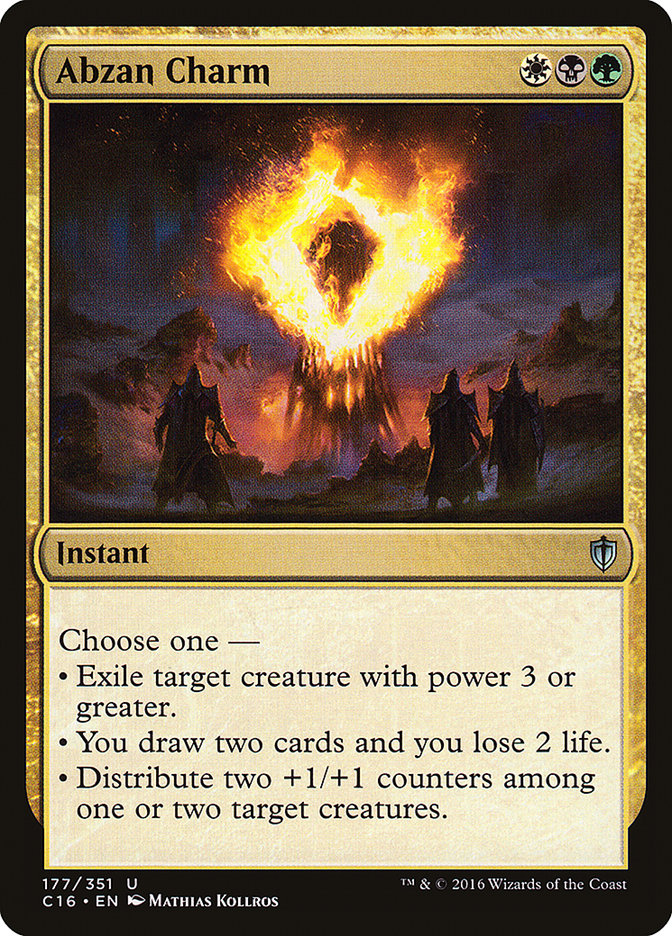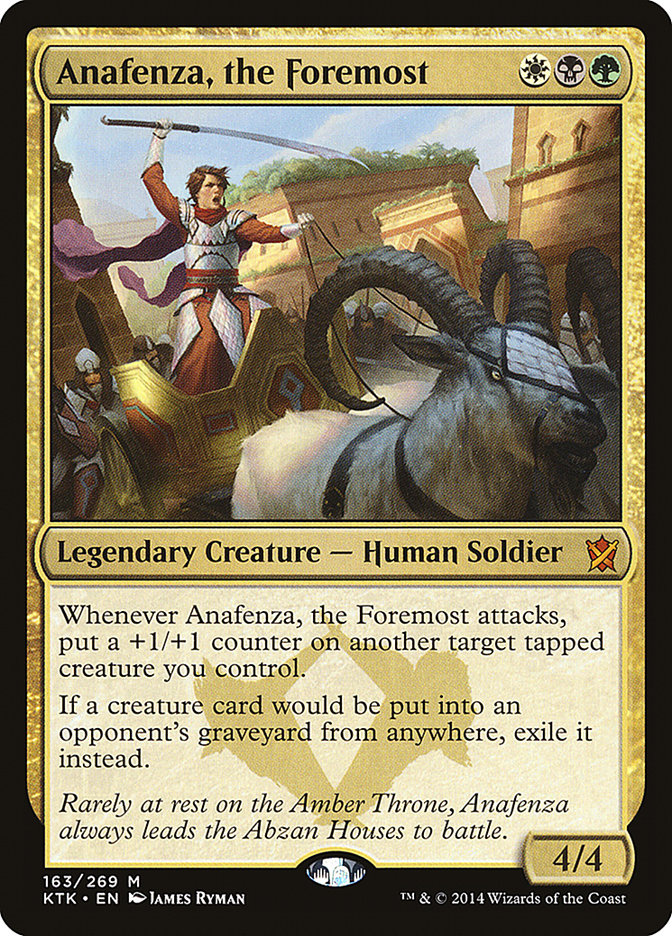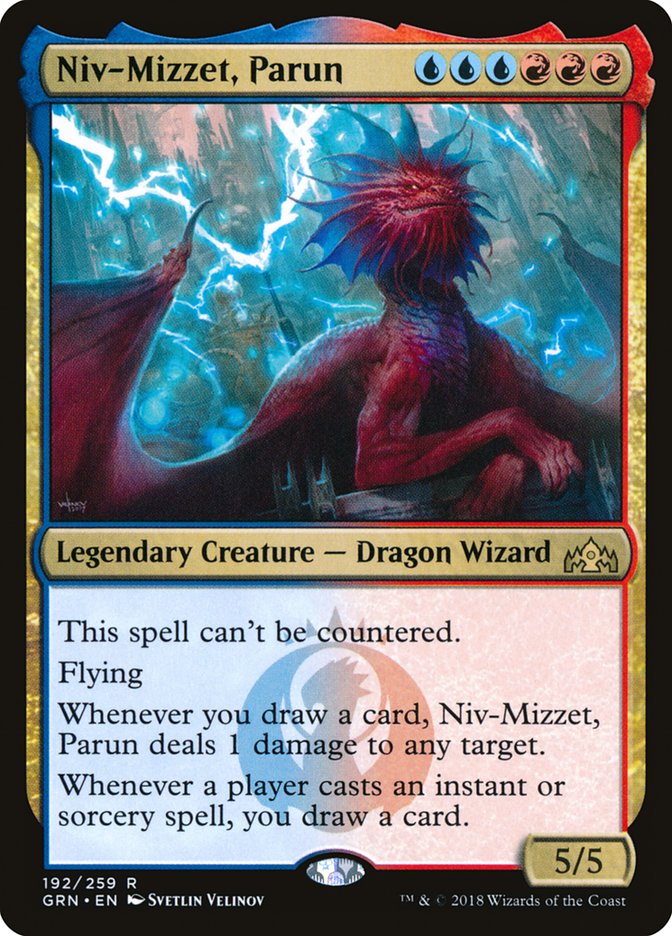My week started abruptly with a rather unsettling article title:
“Jeskai Control Is The Best Midrange Deck In Standard”
. I originally planned to start the day with a nice cup of coffee and then
maybe a match or five on Arena. You know, normal things. Instead I felt
like I’d been slapped in the face. Completely insulted! Excuse me Mr. Lax,
are you actually implying that Jeskai Control is both a midrange deck and also that it’s better than Golgari Midrange?
The millennial inside me wanted to start spitting venom on the internet
before even reading the article, but I got a hold of myself. Instead, I
drove to my favorite coffee joint to get a delicious beverage and, of
course, cool down some. Once home, I was finally ready to indulge Ari’s
“hot take.” So, I, of course, fired up MTG Arena and played half-a-dozen
matches, then got to reading. Luckily, I stayed objective and found the
article absolutely fantastic.
Wrong, of course, but still great nonetheless.
It’s vital for you to have read his article before continuing mine. We’re
going to talk about what I believe Ari got right, what he got wrong, and
what being a midrange deck actually means.
There’s so much to unpack here. Honestly, I don’t even know the best way to
proceed. Ari broke down his article into individual problems that Golgari
Midrange has in Standard that Jeskai Control doesn’t. Case-by-case he’s
mostly correct, especially when solely considering the snapshot metagame
Standard’s currently in. It would be difficult to go point-by-point, so
instead I’m just going to break this article into what’s factual and what’s
fake.
Fact: Jeskai Control beats Golgari Midrange
I can’t say for certainty that there’s no way to build Golgari to beat
Jeskai, but it’s safe to say this is a horribly lopsided matchup currently
with how the decks are constructed. Golgari’s unfocused cards just don’t
line up well against Jeskai’s. Down the road I plan to circle back to this
topic in an attempt to turn Golgari into a Jeskai-beating monster, but I
can’t even say for certainty I’ll be remotely successful.
I bring this up first because it’s very important to know this if you
didn’t already. I believe Ari considers Jeskai Control to be a better
midrange deck for two reasons – it’s the winning deck in this specific
matchup, and the games play out very much like a midrange mirror. Now
that’s not giving Ari the credit he deserves, but every hypothesis must
start somewhere.
Fact: Jeskai control was a great choice last weekend.
Creatures (7)
Planeswalkers (4)
Lands (20)
Spells (29)

Distracted metagames are the best times for specific decks to attack a
metagame. Teferi, Hero of Dominaria strategies had a poor Pro Tour
performance, but white-based aggressive decks had a great weekend. This
caused many to think Mono-Red Aggro would be a good choice going into Grand
Prix Milwaukee and SCG Las Vegas. A safe but effective answer to both decks
is Golgari Midrange. It also helped that the newer versions of Golgari that
didn’t focus on Carnage Tyrant in the maindeck felt favored against Izzet
Drakes. All around Golgari Midrange was a great choice if you expected
little Jeskai Control.
Golgari was, once again, the most popular strategy going into the weekend.
Jeskai Control preys on Golgari Midrange and people were once again not
respecting control decks enough. It might always be that way, but something
worth bringing up when discussing this is that we’ve yet to see what this
Standard format looks like when control decks are being targeted. Since
Jeskai Control has now won two Standard Grand Prix, there’s probably an
argument for doing so.
Twelve copies of Jeskai Control in the Top 32 makes me believe it’s time to
move the bullseye just a little.
Fact: The current metagame has been warped by Golgari Midrange.
Many of Ari’s arguments are about how poorly Golgari cards line up against
the metagame, but it’s very important to realize this format’s been shaped
by the deck’s presence. Almost every card/strategy that’s horrific against
the deck is practically gone and all that remains is the decks that can
compete with it. Golgari Midrange also must constantly play catch up as
each week is another grueling game of “How do we attack Golgari now?”
It’s actually a testament to the strategy that it’s able to compete even
when it’s continuously enemy number one or close to it. Four different
players took Golgari Midrange all the way to Grand Prix Milwaukee top 8
finish. This is by far the best finish for Golgari in an event that awarded
Pro Points, and I believe the main reason for this is that Golgari pilots
finally learned that it’s impossible to win if the deck’s always built to
beat the mirror first.
Well, Seth Manfield didn’t get that memo, but still crushed it!
Creatures (24)
- 4 Llanowar Elves
- 2 Druid of the Cowl
- 3 Carnage Tyrant
- 3 Wildgrowth Walker
- 4 Merfolk Branchwalker
- 4 Jadelight Ranger
- 3 Ravenous Chupacabra
- 1 Midnight Reaper
Planeswalkers (5)
Lands (15)
Spells (16)

Fact: Golgari’s threats are cascading and its Planeswalkers do play to the
battlefield.
This was one of my bigger hangups with Ari’s article. First off, the
explore package can have cascading advantages. Obviously explore is high
variance, but that doesn’t mean it can’t generate true castable cardboard
equity. The explore creatures just can’t do that alone. Cards like
Find//Finality and Golgari Findbroker work well alongside early explore
creatures. Most of the time a Golgari mage will want to draw lands off
their early explore creatures, but even when they don’t, creatures put into
the graveyard can be brought back on curve in a variety of ways. It’s just
that Golgari Findbroker is not particularly good right now, thanks to the
complications presented from this hateful metagame.
The same can be said about the deck’s Planeswalkers. They do play to the
battlefield well as Vraska, Golgari Queen, Vivien Reid, and Vraska, Relic
Seeker can all destroy a permanent the turn they enter the battlefield. The
cards/decks that were punished the worst from these Planeswalkers were
forced to leave the metagame. That’s why we’ve seen most Golgari decks to
trim on their copies but metagaming does happen. Since Golgari decks
started playing Doom Whisperer, some Golgari mages have started playing
with Vraska, Relic Seeker again. It’s a vicious cycle of metagaming that
will never end, which is one of the best features of Standard.
I don’t think Ari’s points here are fair since his main point is that they
don’t beat Teferi, Hero of Dominaria in a Planeswalker battle. Guess what,
there’s not many Planeswalkers out there that beat Teferi one-on-one. In
Modern we’ve seen this Standard-legal card push Jace, the Mind Sculptor out
of builds of Jeskai Control entirely. Teferi, Hero of Dominaria is by far
the best card in Standard and dominates the other Planeswalkers in the
format. It’s the main reason why control is playable right now even without
access to the Azorius Senate.
Fake: Jeskai Control is a midrange deck.
I’ll be honest, this was the opinion that struck the biggest nerve and is
the main reason why I’m here today. I’m not going to argue semantics of the
threat/answer ratio that defines a midrange deck in Standard. I actually
don’t care if people really want to characterize this deck as a midrange
deck. I, too, am a Teferi caster and have been since the card was first
released. I even played Approach of the Second Sun at Pro Tour Dominaria (have mercy on me). I’m just here to give my description
of what a midrange deck is in Standard and why Jeskai Control is not one of
them.
While close to a midrange deck, what Ari played this past weekend is not
exactly one of them. It’s just a control deck that plays seven creatures.
Teferi and Niv-Mizzet, Parun are both exceptional Magic the Gathering cards
– seriously, they’re spectacular. I consider them “messed up” actually.
Crackling Drake is also great but not on the same level.
Together these cards make it so difficult for other decks to know just how
many answers they want to play against the strategy, and Ari’s correct in
his assessment that being on the wrong end of exchanges is back-breaking
against Jeskai Control. It’s also important to remember that the metagame
is not focused on beating Jeskai Control so other decks rarely have the
appropriate tools to fight against the unique spread of threats.
Put me in coach, I’m ready to play.
This is another reason why I believe Ari thinks of this take on Jeskai
Control to feel more like a midrange deck when it’s in fact a tap-out
control deck in a metagame that’s not fully prepared for it. Once people do
start preparing for the matchup, I don’t think the deck could really stand
up to the targeted onslaught.
So, what is a midrange deck in Standard? In all honesty, the lines bleed in
Standard so much now that it’s just semantics to categorize decks into
Aggro, Midrange, and Control. The best example of this is back when Abzan
Aggro and Abzan Control were apart of Standard in Khans. They both
shared a bulk of the same cards, but the slight differences slanted one
deck more aggressive and one more controlling. The format, though, had more
aggressive decks and more controlling ones.
Standard used to adhere to these terms before Planeswalkers were printed,
but the multiverse travelers changed the landscape of Standard forever.
Creatures started to get more powerful to better fight against
Planeswalkers, removal became more situational, and slowly Standard started
to change.
Now there’s many more reasons why every deck has transitional threats in
the sideboard that attack from different angles, but we don’t have time to
break down everything about that today. We just know that’s correct and can
move on from there.
This shift in Standard makes most decks lean more towards being a midrange
deck after sideboard. Mono-Red Aggro has Treasure Maps, Lava Coils, and
Fight with Fires. Jeskai Drakes has Murmuring Mystic, Ral, Izzet Viceroy,
and Niv-Mizzet, Parun. Even these white aggressive decks have Ajani,
Adversary of Tyrant and sometimes splash for Experimental Frenzy. After
sideboard, everything’s pretty much midrange.
So that would make Ari correct, right?
Wrong!
It’s important to know what a midrange deck is in Standard, because it’s
trying to accomplish much different things than the other decks. For
starters, the biggest boon for midrange decks is they get to take advantage
of this universally-adopted strategy. They are already designed to have
good removal, some card advantage, good threats, and the ability to either
go under, or over their opponents. A good midrange deck should always be
improving its matchup against an opponent after sideboard. At the very
least, it should improve against a large portion of the metagame. The main
reason being that the other more linear strategies “midrange sideboards”
aren’t as good as the true midrange deck. If that’s not the case, there’s
very little reason to be playing a midrange deck in the first place.
None of this really matters in the abstract of Standard. The most important
lesson to learn in the format is to never expect the same core threats in
the maindeck to be able to win you a tournament. You must shift your
strategy around after sideboard or at least give yourself the option to.
The most important takeaway from this article, though, is that midrange
decks are designed to exploit this fact. Your job with midrange decks is
always to be able to use an opponent’s sideboard against them because you
should have more tools than they do after sideboard. Sometimes they will be
forced to sideboard in a very specific way but you won’t be. Sometimes they
will be forced to level you by just going as aggressive as possible and
when you pick up on that, you get to crush them with your most anti-aggro
build.
Teferi decks will never have this luxury and they shouldn’t. All decks want
to maximize their win percentage, and controls decks do this by slightly
transitioning their gameplan. Sometimes it involves different threats, more
or less removal, or counterspells. A control deck is only as good as its
finishers and last weekend Niv Mizzet, Parun was an exception choice. That
doesn’t mean this deck will be able to stand up to a format targeting it,
nor does it mean that Golgari will always have a good stranglehold on the
metagame either. It just means that a Teferi deck will want to lean on it
being a control deck and sometimes playing high density of creatures when
the removal isn’t lining up well against it.
Long story short, I have all the faith in the world that Teferi, Hero of
Dominaria will continue to be one of the best choices in the format, but I
wouldn’t be surprised at all if we see the creatures get removed from the
maindeck. It’s all contextual to how the format reacts to things, but I
urge you not to consider Jeskai Control a midrange deck fighting adversity
by putting even more threats into the deck. I’d rather see you consider it
a metagame call whether that’s the deck itself or the way you construct it.
Your win percentage will thank me.


